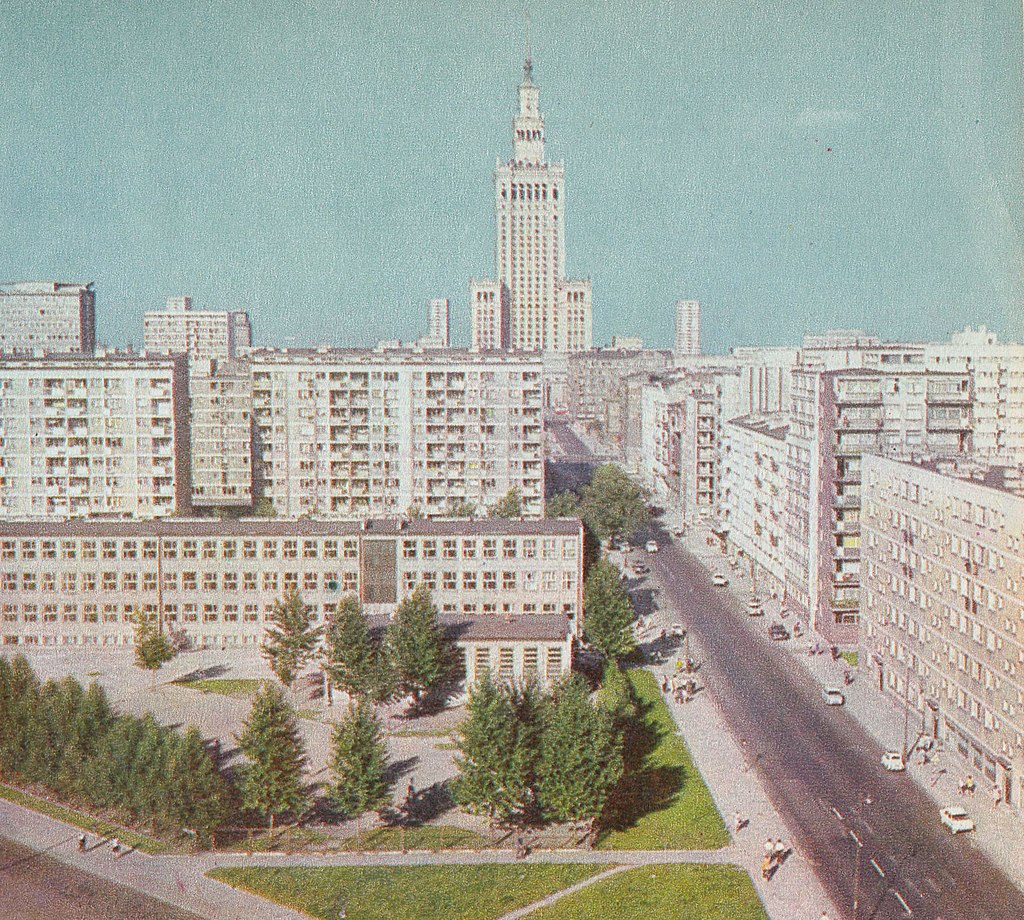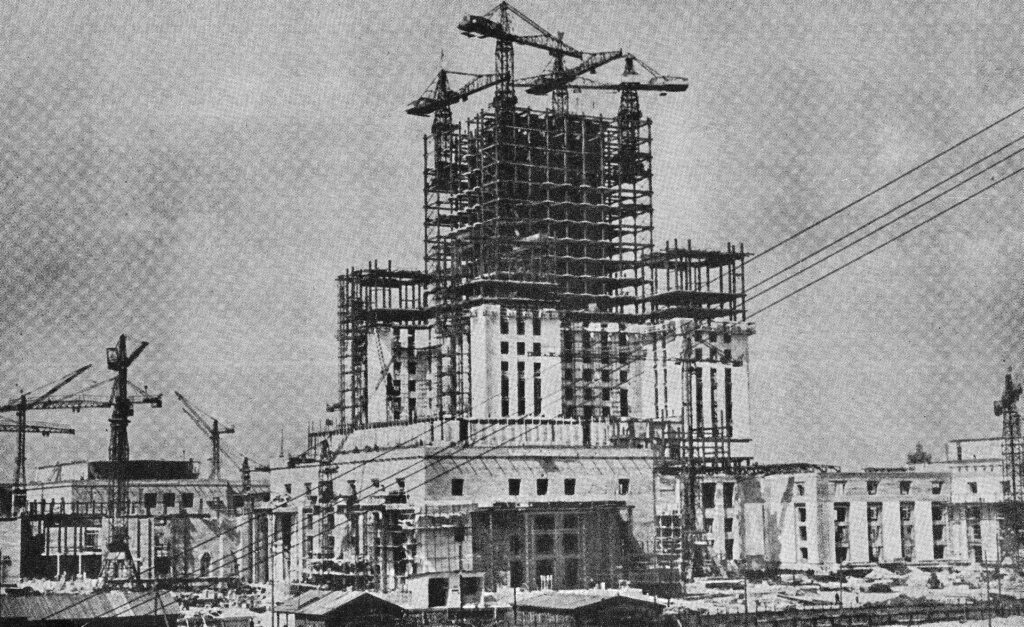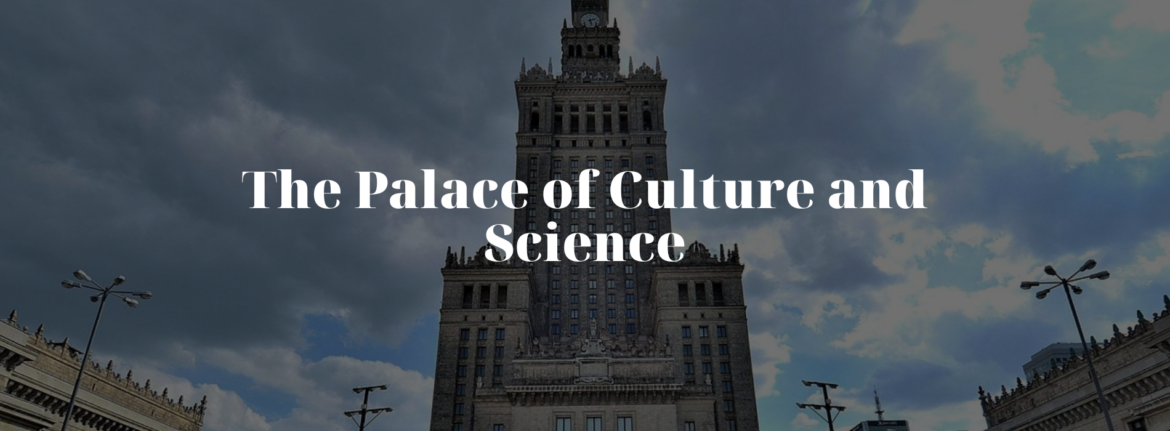The Palace of Culture and Science (PKiN) in Warsaw stands as one of the most recognizable symbols of Poland’s capital city. Constructed between 1952 and 1955 as a „gift from the Soviet nation to the Polish nation,” it continues to evoke both admiration and controversy. Its monumental silhouette dominates Warsaw’s city center, while its rich history and diverse functions make it a crucial landmark on Warsaw’s cultural map.
Historical Origins
The decision to construct the Palace was made in 1951 at Joseph Stalin’s initiative. The project was entrusted to Soviet architect Lev Rudnev, who drew inspiration from Moscow’s skyscrapers known as the „Seven Sisters.” To incorporate Polish character into the building, Rudnev traveled throughout Poland, studying native architectural styles.
An interesting anecdote from the planning phase involves the determination of the building’s height. Russian and Polish architects gathered near the Śląsko-Dąbrowski Bridge on the right bank of the Vistula River. A small airplane pulling a balloon flew over the axis of the future skyscraper, with the ground team maintaining radio contact with the pilot. Initially, the balloon flew at 100 meters, gradually increasing to 110 and 120 meters. While the Russians, led by Rudnev, considered 120 meters sufficient for the city’s highest point, the Polish team, headed by Józef Sigalin (Warsaw’s chief architect and palace construction plenipotentiary), kept calling for „Higher!” after each 10-meter increase. Eventually, the main tower was set at 120 meters, with a turret at 160 meters and a spire reaching 230 meters.
Construction began on May 2, 1952, and lasted just over three years, employing approximately 3,500 Soviet and 4,000 Polish workers. During the preparatory work, dozens of historic pre-war tenement buildings that had survived the war were demolished. The grand opening took place on July 21, 1955. Two days after Stalin’s death, before construction was completed, the building was named „The Palace of Culture and Science in the name of Joseph Stalin.” Upon completion, it was the tallest building in Poland, the second tallest in Europe, and the eighth tallest worldwide.


Architecture and Structure
The PKiN represents an impressive example of socialist realism with historical elements. The building reaches 237 meters in height, making it Poland’s tallest structure for over six decades. It comprises 42 above-ground floors and two underground levels, with a total usable area of 123,084 square meters. In 2000, a millennial clock with a diameter of 6 meters – one of Europe’s largest – was installed on the 40th floor. While the building initially featured a light facade, it gradually took on shades of gray over time.
Functions and Institutions
The Palace serves as a cultural, scientific, and entertainment hub, housing numerous institutions including:
- Theaters: Dramatic Theater, Studio Theater, Lalka Theater, and 6th Floor Theater
- Museums: Evolution Museum of the Institute of Paleobiology and the National Museum of Technology
- Cinema: Kinoteka, offering a broad film repertoire
- Universities: Collegium Civitas, conducting classes on the 11th and 12th floors
- Conference facilities: Including the Congress Hall, capable of accommodating about 3,000 people (currently under renovation)
Observation Deck
The 30th floor, at 114 meters, features an observation deck offering panoramic views of Warsaw. This popular tourist attraction draws both locals and visitors. After 1956, it was fitted with bars following a series of suicide jumps in previous months.
Cultural Significance and Controversies
Although initially symbolizing Soviet dominance, the PKiN has become an integral part of Warsaw’s landscape. Its 2007 inclusion in the register of historic monuments sparked significant opposition, including a letter to Poland’s president requesting to block its addition. The Association „Lesser Poland Initiative of King Władysław Łokietek” stated: „This decision means the PKiN will be permanently protected by legal inviolability. This monument of USSR colonial architecture in Poland’s capital will forever testify that Stalin and Molotov’s diabolical plan to Sovietize the mentality of Poles born under Soviet occupation through the Palace’s architectural symbolism has succeeded.”
Experts and architects from the Committee of Architecture and Urban Planning of the Polish Academy of Sciences argued that „The palace’s concept contradicts architectural rationality in all its economic, technical, aesthetic, and urban aspects,” further questioning the decision to register it as a historic monument. The building has acquired various nicknames, such as „Peking” or „Clown,” reflecting its ambivalent social reception.
Notable Facts
- The millennial clock installed in 2000 ranks among Europe’s largest
- Rudnev’s design references Moscow’s „Seven Sisters” skyscrapers
- The PKiN held the title of Poland’s tallest building for over 60 years until Varso Tower surpassed it in 2021
Today, the Palace of Culture and Science remains not only Warsaw’s architectural landmark but also a vital center of cultural and scientific life. Despite controversies surrounding its history, it has become an permanent fixture in the city’s landscape, representing both a complex historical legacy and a modern cultural hub.
